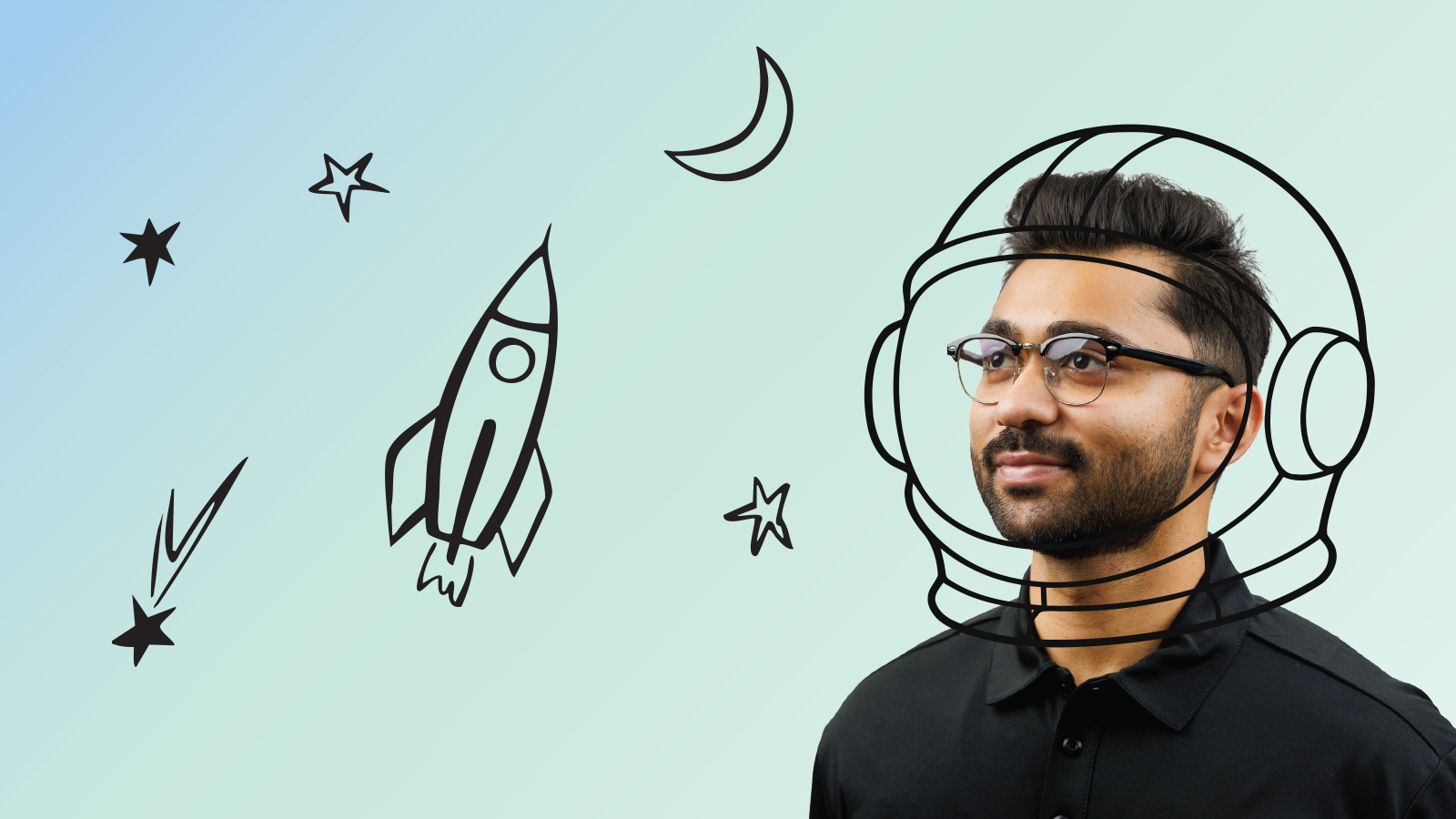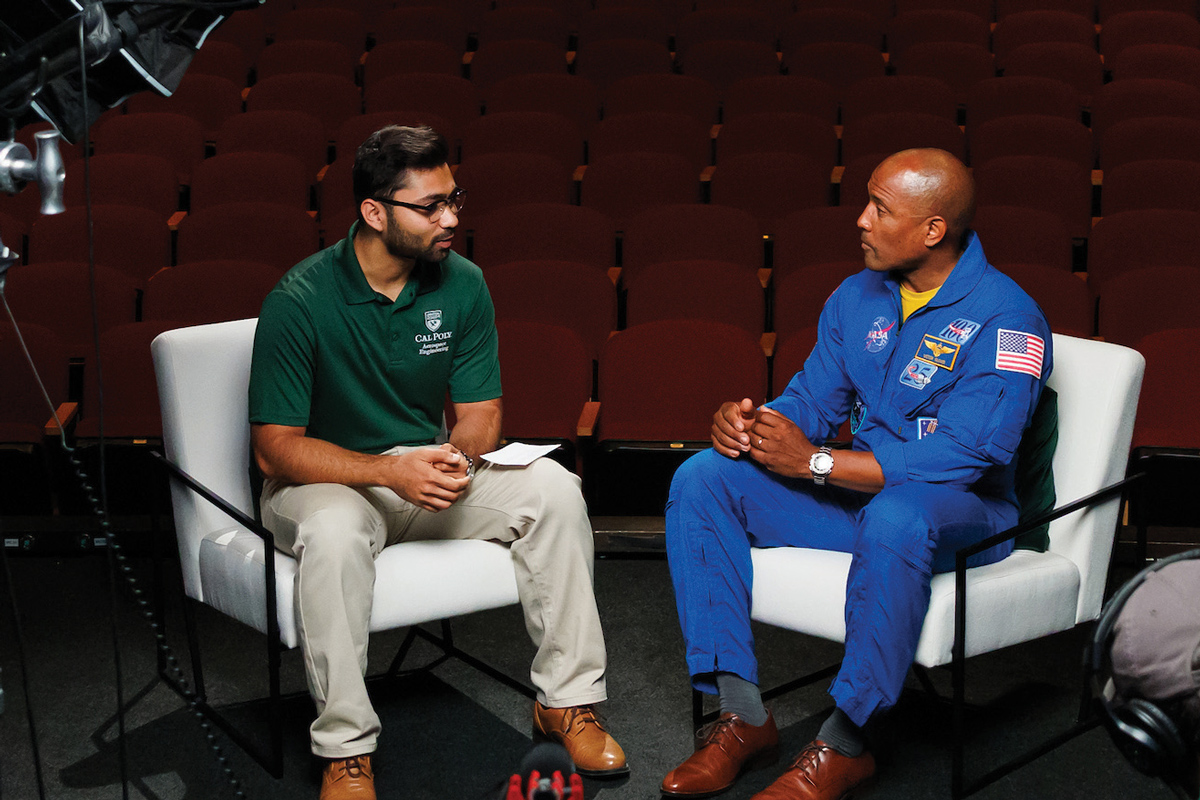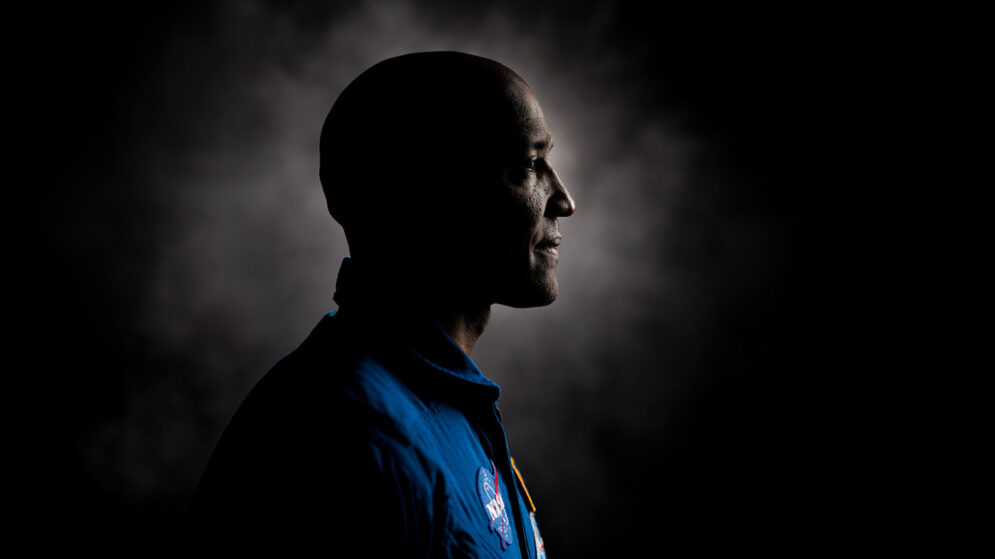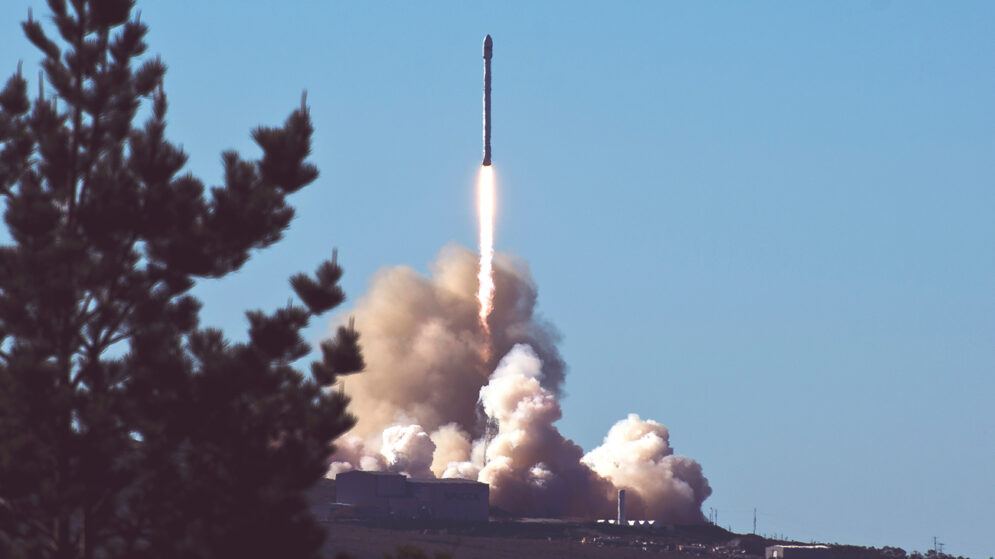Preparing for Liftoff
Why I Reach for the Stars
Aerospace engineering student Kanan Thummar is at his best in a worst-case scenario — which is why he wants to be an astronaut.
By Kanan Thummar // Photos by Joe Johnston
Share this article:

Every time I see the moon, I think about how wild it is that we actually sent people there. It makes me think maybe I can be part of that story too.
When I was a kid growing up in India, I really wanted to be an ice cream man, but I also dreamed about space. I’ve always been resourceful, especially when it comes to engineering. I spent most of my weekends working on my car, and that’s where I picked up my first set of mechanical skills.
After transferring from junior college to Cal Poly, my goals came into focus. I started learning about fluid mechanics, finite element analysis and CAD design. That knowledge unlocked a whole new level of curiosity for me. I got involved in building race cars with Cal Poly Racing and developing a rocket engine test stand with SLO Propulsion Technologies. I’ve always been drawn to ambitious projects because they let me apply what I’ve learned in class while working alongside incredibly smart people. Studying aerospace engineering keeps me excited because there’s always something new to learn, and every task gives me the chance to explore.
"I know the road to becoming an astronaut won’t be easy, but I believe it’s a road worth taking."
Kanan Thummar, Aerospace engineering student
Over time, I developed this kind of engineering intuition: I can sense where a project might go wrong. I think that’s one of my strongest skills and a big reason why I believe I can be an astronaut. Things don’t always go as planned, and I’ve found that what you do in those moments really defines you. Being able to stay calm, think creatively and work the problem is what makes someone a good astronaut.
The experience that really solidified it for me was the Human Spaceflight class taught by professor Kira Abercromby, an incredible mentor who helped me realize that being an astronaut is something I can actually pursue. She’s always been open to my questions, even the ones that probably sounded stupid at the time.
In her class, we designed a mission where six astronauts would survive a year on Mars. I remember getting really into the failure modes section, especially the part about the Mars rover. I came up with a bunch of ways we could jury-rig other instruments to fix it if something went wrong. At the time, I thought maybe I was overthinking it, but I realized I was actually comfortable thinking through messy, unpredictable situations.

Kanan Thummar, right, speaking with Cal Poly alumnus and NASA astronaut Victor Glover on the set of a video shoot in June 2025.
I mentioned how much I enjoyed thinking through snafu scenarios to NASA astronaut and alumnus Victor Glover when we spoke a few months ago, and he told me it reminded him of the dynamic nature of wrestling — how sometimes you’re in a bad position and just have to work your way back. He said that the ability to stay focused and return to ideal-mission conditions is a really valuable skill for astronauts.
Maybe one day I’ll walk on the moon, set foot on Mars or achieve my ultimate goal of completing a spacewalk. I want to look back at Earth and just take in that moment. We’ve talked about that a lot in my astronautics classes, and the idea of being one of the first humans to go somewhere no one’s ever been gives me chills.
When I arrived in the United States in 2016, I never imagined I’d come this far: earning a bachelor’s degree and working toward my master’s in aerospace engineering. I know the road to becoming an astronaut won’t be easy, but I believe it’s a road worth taking.
Your Next Read
As the engineering alumnus gets ready for a historic voyage beyond the moon, he shares how Learn by Doing prepared him to face the unknown.
University faculty and programs are backing the Central Coast’s strides toward becoming a unique hub for the aerospace industry.




